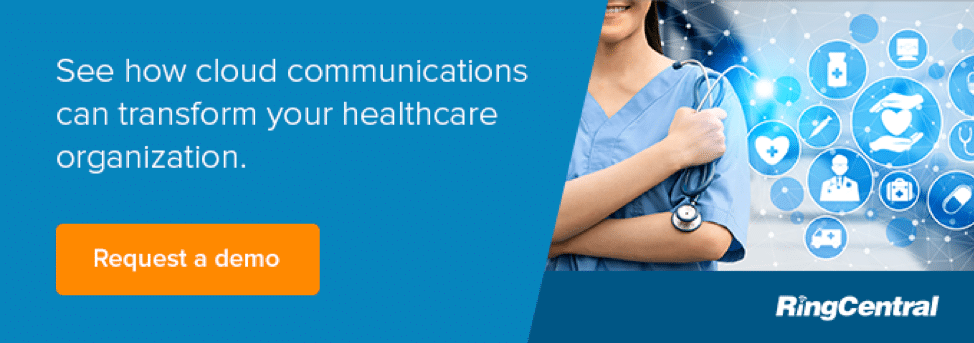According to IBM’s 2019 Cost of a Data Breach report, the average cost of a data breach globally reached $3.92 million in 2018.
In the healthcare industry, that figure hit a staggering $6.45 million.
According to Deloitte, life sciences and pharma, in particular, represent huge targets for cybercriminals. A recent Proofpoint report revealed that in one recent quarter, hackers targeted pharmaceutical companies an average of 71 times per business. HealthITSecurity.com reported that, by the end of 2018, there had been 282 attacks on the pharma industry.
These data breaches come at a tremendous cost. In 2017, a cyberattack on Merck cost the pharmaceutical giant an estimated $915 million, according to the company’s annual report. By disrupting production of certain Merck medicines and vaccines, and halting work for many of Merck’s workforce, cyber criminals dealt a significant blow to the company.
Why Pharma Attracts Cyber Attacks
Experts say hackers target pharma for several reasons. Pharma’s perceived deep coffers and the tantalizing allure of extensive R&D spending draw bad actors by the thousands. Add to that the promise of unearthing trade secrets and intellectual property that could be sold for unimaginable sums on the dark web and the industry’s near-total reliance on technology for business operations, and you can easily see why pharma is such an attractive target.
In an industry that depends on speed to market to provide a competitive edge, a cyberattack represents a particularly potent threat. The loss or ransom of proprietary information can easily cripple a pharmaceutical company, ham stringing its production efforts and effectively negating years of R&D in the process.
Pharma’s Migration to the Cloud
These security challenges for life sciences come at a time when the industry is making a steady move to the cloud. Recent research from IDG and Accenture shows that life sciences companies have already migrated more than one-third of their applications to the cloud.
As a tech-driven industry, life science organizations stand to benefit greatly from the cloud. Beyond the cost savings advantages, cloud-based communication platforms facilitate faster innovation and speed to market by aligning customizable collaboration tools with teams during critical production and clinical trial workflows.
Leverage the Advanced Security of Cloud Communications
For life science companies considering moving to the cloud, security remains a primary consideration for adoption.
HITRUST-CSF certified cloud communication platforms address that consideration head-on with a security risk management framework that exceeds healthcare security regulatory requirements. In fact, recent research indicates that companies are feeling better about data security. According to the 2019 SANS State of Cloud Security survey, concern for data breaches by cloud provider personnel dropped significantly from 2017 to 2019.
Due to the sensitive nature of their information, pharma companies must find a secure cloud communication and collaboration solution that covers all areas of potential vulnerability in communications both internal and external to the company.
Advantages of Secure Cloud Communications for Life Sciences
Secure cloud communication platforms address multiple pain points for pharma, including data silos and a distributed workforce, an ever-widening talent gap, stalled innovation and delayed speed to market, and poor engagement with external stakeholders.
Uniting a Distributed Workforce
Many pharmaceutical companies have global offices and, therefore, a widely distributed workforce. Nick Maynard of Juniper Research told Healthcare IT News: “In life sciences the challenges to enabling better global collaboration are the same as any large corporate venture. Data is often held in silos, which means that different teams can be working on related areas but not have access to each other’s data or even know it is happening.”
A cloud communications platform that scales globally solves that problem. Scientific and development teams and other authorized stakeholders have access to each other and secure data in real-time, which is vital to avoid the duplication of effort and its attendant loss of resources. Maynard adds: “In large organizations, breaking down barriers between different areas can add value and improve the way in which current communications processes are handled, as well as creating new opportunities to create communication between areas which were previously disconnected.”
Casting a Wider Talent Net
For many life sciences companies, talent sourcing has become a significant barrier to continued innovation and growth. Local skilled workers may be in short supply.
Cloud communication and collaborative tools allow life sciences companies to cast a wider net in their talent search by enabling secure global collaboration. Skilled researchers from anywhere on the globe can collaborate via their device and medium (i.e., video, voice, secure messaging) of choice in a secure communication ecosystem. Removing the limits of geography helps life sciences tap into the human capital resources available worldwide.
Increasing Speed to Market and Spurring Innovation
A lack of secure collaborative tools and agile access across R&D teams leads to delays and stalled innovation initiatives. A cloud communication solution that offers file sharing, messaging or video conferencing, and the exchange of time-sensitive information can lead to a data lake filled with the potential for significant innovation and even breakthroughs in scientific research that lead to faster speed to market.
Improving Engagement with Physicians and Patients
Multiple, fragmented communication apps result in poor external communications as well. This leads to difficulties in recruitment for clinical trials, marketing, and patient and physician engagement.
A cloud communication platform with built-in contact center functionality enables omnichannel conversations with research colleagues, physicians, and patients alike. McKinsey notes: “Pharmaceutical sales reps, medical-science liaisons, and patient-service teams can inform and influence patients, physicians, and caregivers in person or via mobile phones, the Internet, apps, or social media.” https://assets.ringcentral.com/us/checklist/clinical-trial-recruitment-technology.pdf
What to Look for in a Secure Cloud Communication and Collaboration Platform
A comprehensive cloud collaboration platform eliminates the need for multiple communication apps and their attendant potential security risks. Having fewer apps translates into fewer potential entry points for hackers to exploit. That’s pure gold.
What should you look for in a cloud communication and collaboration platform for pharma? The platform should include:
- Team messaging capabilities that allow your teams to build messaging groups on the fly to share ideas, documents, and links around projects or topics. Message alerts to receive an immediate notification of voice and fax messages via email, SMS, and desktop and mobile apps.
- Cloud voice gives you one number across all devices—computer, smartphone, or tablet. Look for features such as extensions, call forwarding, call delegation, and the ability to shift ongoing calls to other devices.
- Video and audio meetings enable you to connect and collaborate on any device. Look for HD audio and video, and cloud telepresence to stream video from conference rooms.
- A collaborative contact center that enables efficient omnichannel routing, real-time collaboration ability, workforce optimization, and analytics.
- Internet fax enables you to send and receive faxes from your computer, mobile device, Microsoft Outlook, cloud storage providers (such as Dropbox), and more.
- A centralized app that integrates the above features in one place, so you can easily switch modes of communication between desktop and mobile.
What about the Level of Security?
As previously indicated, cloud communication and collaboration solutions for life sciences should be delivered via a comprehensive security risk management framework. This ensures that all data, including physical, network, host, data, application, and business processes are highly secured.
Within this comprehensive risk management framework, look for TLS (Transport Layer Security) and Secure Real-Time Transport Protocol encryption between all endpoints. This enables life science teams to send information without worrying that it will be compromised.
Also look for infrastructure security, such as firewalls and session border controllers, multiple authentication levels, intrusion-detection systems and fraud analytics, monitoring, system hardening, and vulnerability scans, all of which thoroughly protect your information.
Industry security certifications are also important. Look for these industry certifications:
- SOC 2 Type II
- SOC III
- HITRUST CSF
- Skyhigh CloudTrust
A Secure Cloud Communication Platform is Available to Life Sciences Now
RingCentral is committed to being transparent about how customer data is collected, transferred, and protected across our platform. Given our global footprint, we adhere to regulations worldwide and are constantly innovating to meet regional guidelines, wherever applicable. We have instituted extensive measures at every level of our system architecture and infrastructure and partnered with best-of-breed companies to secure the RingCentral platform.
That’s why life sciences and pharma companies turn to RingCentral as their choice for cloud communication and collaboration solutions. To learn more, download the Data Security for Life Sciences Infographic.
Originally published Nov 22, 2019, updated Apr 17, 2024






